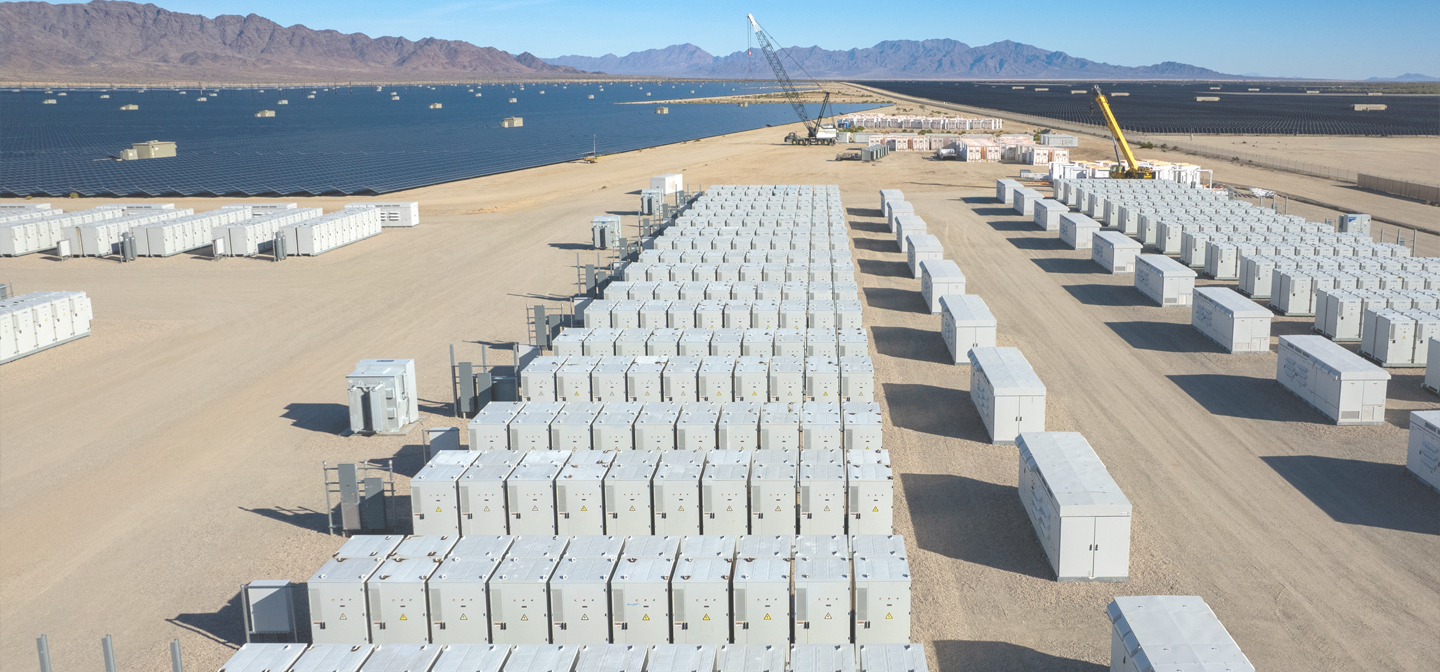
California’s transition to green energy seems to be picking up pace this spring, with big batteries overtaking other power sources during evening peaks and renewables collectively trouncing earlier records. This is according to a recent report by Renew Economy.
But this isn’t the first time this has happened in the state. On April 16, 2024, Tuesday, not long before the latest occurrence, the California grid recorded its first time ever having battery storage as its largest power supply source. The landmark event happened for about two hours during the evening peak, with battery storage serving more than 6GW of power. Significantly, the said grid is one of the world’s biggest grids, delivering electricity to the world’s fifth-biggest economy.
Then from Friday until Sunday, California battery storage set several output and market share milestones, each one exceeding the ones that came before. Notably, renewables had a remarkable showing on Saturday with a record peak share of 156% of local demand in the afternoon around 2:15 PM.
As a whole, renewables output from wind, hydro, and solar covered California’s demand for over 9 hours on Saturday but battery storage gained the top share for 80 minutes in the evening.
Meanwhile, Sunday saw battery storage dominate with a record of 6.5 GW, providing 36.5% of supply.
These impressive achievements indicate the potential of battery storage and renewables in helping California’s expansive grid meet demand during peak periods. The state is also planning to have doubled its battery storage capacity by next year.
What does California’s success with battery storage mean for Australia?
California’s feat sets a precedent for Australia possibly achieving the same with renewables thanks to some similarities. Australia, like California, is sunny. Australia has some of the world’s highest solar radiation levels. Coastal areas in both places are very windy, making them conducive to wind farms. Like the US state, Australia’s government has committed to meeting very ambitious renewable energy targets and is quite enthusiastic about supporting renewable energy projects through grants and incentives.
But of course, Australia and California are not identical. For all their similarities, naturally, there are also going to be differences that mean Australia will have to vary its plans and execution to meet its specific goals. Some factors that may challenge Australia are grid integration, storage capacity, infrastructure, public opinion, and population density.
- Grid integration – Incorporating renewables into the existing grid isn’t a straightforward endeavour as renewables like solar and wind power tend to fluctuate according to the weather. In contrast, fossil fuels are generally more stable.
California was able to circumvent some grid integration issues because of its more advanced infrastructure. To do the same, Australia will require some upgrades to ensure that it can manage the influx of renewables.
- Storage capacity – While batteries are touted as a solution to some of Australia’s energy woes, our current storage capacity may be insufficient especially if compared to California, but this can be solved by adding more storage facilities.
- Transmission infrastructure– Australia’s landscape is expansive, thus delivering power from renewable energy generators, often erected in remote locations, to populated areas can require major ‘poles and wires’ investment and upgrades.
- Population density – If we compare Australia to California, the US state has a denser population. An effect of this is that peak demand is more concentrated, making it easier to manage peak demand in these areas and deliver the supply requirements. Meanwhile, our country’s population is more spread out, so filling the demand is comparatively more challenging.
- Public perception – Australians are starting to appreciate and support the transition to renewable energy, however, there’s still some considerable pushback due to an assortment of concerns including its effect on:
- the landscape – some people consider wind farms to be an eyesore that can negatively impact the resale value of surrounding property.
- the local wildlife – wind turbines can be unsafe for birds passing through and can potentially harm other fauna nearby.
- noise pollution – wind turbines can be noisy, and this can be concerning to communities around wind farms.
These challenges can be addressed by Australia, taking the triumphs and continuous progress California has made with battery storage as a precedent. It’s certainly buoying to note how the US state managed to break records repeatedly and that Australia could potentially meet the same success, getting closer to meeting the country’s renewable energy goals.
Move forward to a future with renewable energy for your business
Navigating the Australian energy landscape can be challenging, but if your business is determined to make the transition to renewables, a commercial and industrial energy broker like Leading Edge Energy can help you.
Our team makes it our business to help your business meet your energy goals by analysing your energy requirements and costs, looking into renewable energy options, developing a bespoke energy plan based on your operating needs, and finding the best offers for electricity and gas retailers for businesses.
Interested in starting your business on the path to net zero? Let’s talk! Call our energy management consultants at 1300-852-770 or email us at info@leadingedgeenergy.com.au.
Get advice from our Energy Management Consultants

Ewen Beard
Sales Manager
Get in Touch
Feel free to call or e-mail us. Or just fill in the form below and we’ll contact you for an obligation-free discussion.
Are you ready to save on business energy costs?
Get Started
Leading Edge Energy is proud to be a signatory of the National Customer Code for Energy Brokers, Consultants and Retailers.